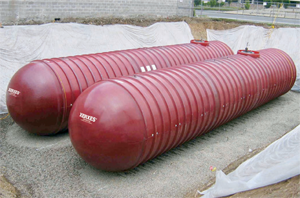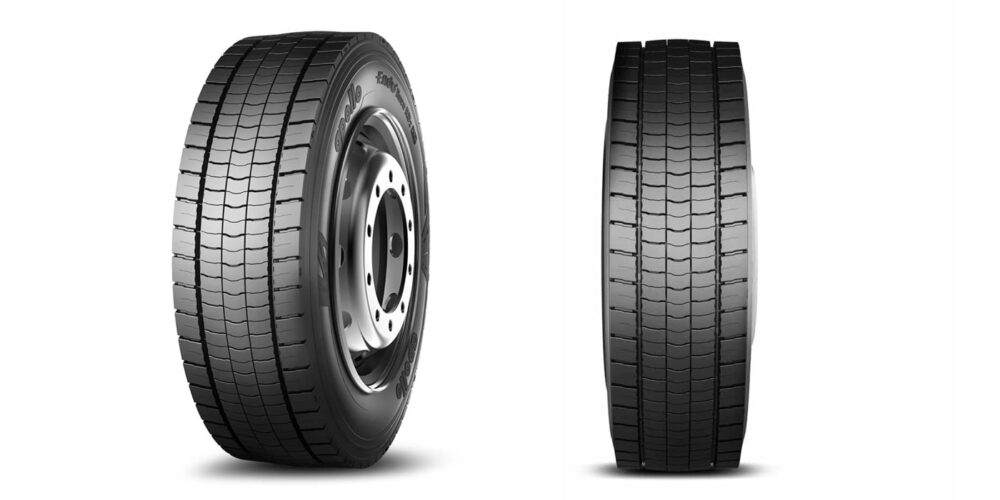High fuel prices simply are not going to go away! As a result, some fleets have begun moving away from their ordinary fuel purchasing procedures in which fuel is normally used in days, or at the most a couple of weeks, after it is delivered to a fleet location. Included in these new strategies are seeking contracts for larger than normal quantities of fuel at discounted prices and purchasing fuel on the spot market when prices are lower than normal. Both approaches offer the opportunity to save money and have high quality fuel available when it’s needed. 
Both strategies, however, normally require the availability of substantial fuel storage tanks, which can bring new problems to a fleet that might not be familiar with issues associated with quantities of fuel stored over relatively long time periods—chemical instability of the fuel, biomass deposits from microbial activity and new regulations with which to comply.
The stability of stored diesel fuel has been studied by the military quite extensively because of its interest in fuel reserves. Diesel can generally be stored for six months to a year without significant quality degradation, according to Exxon, if it is kept cool and dry. It can be stored for longer periods if it is filtered periodically and treated with fuel stabilizers and biocides.
BP engineers agree with Exxon engineers, saying that under normal conditions, diesel fuel can be expected to stay in a useable condition for 12 month or more if it’s kept at a temperature of 70º F or less. At warmer temperatures, storage time is limited to six to 12 months.
Tank maintenance
Maintenance of diesel fuel storage tanks is critical to avoid problems associated with the build-up of water that can accumulate during long-term storage of diesel fuel. Microorganisms tend to grow at an interface between fuel and accumulated water, causing sludge to develop. This material can lead to injector deposits and particulates that can plug filters or the fuel injection system. Microbes are dependent on water contamination of stored fuel for growth. Thus, fuel degradation is a direct result of microbial growth at the water/fuel interface.
Gold Eagle Co. points out that reduced combustion efficiency, elevated pour point and cloud point, poor detergency and increased corrosion of fuel components, in addition to plugged fuel filters, are just a few of the negative effects of microbial growth in storage tanks. Just like all living things, these harmful microorganisms require two things for survival: food and water. In the case of a fuel tank, fuel is their food.
While contaminated fuel can be treated, the best way to avoid contamination problems is to prevent them in the first place. The most effective maintenance practice when storing diesel is to minimize its exposure to water. If you plan on storing fuel for a prolonged period, make sure you purchase fuel that is dry to begin with from a reputable fuel supplier. Fill the tank completely, leaving only enough head space to allow for expansion due to increases in temperature.
If some fuel is removed, replace it as soon as possible to minimize condensation. Too much air space encourages condensation in the tank, resulting in a microbe-loving water/fuel interface. You may want to include a water separator in your fuel storage plans. Circulating fuel through separators, as well as routine discharge of water bottoms from storage tanks, will go a long way in minimizing contamination problems.
Additives
Periodic sampling of stored fuel and laboratory testing of those samples is highly recommended, since problems can be minimized if detected early. Stability additives are available to help keep stored fuel usable over long periods of storage. Chevron engineers, however, indicate that the need for a stability additive varies widely from one fuel to another. It depends on how the fuel was made, the crude oil source and the processing and blending procedures at the refinery. Because of the complex chemistry involved, an additive that is effective in one fuel may not work as well in another.
Oxidation is a common mode of fuel instability. It takes place when oxygen attacks reactive compounds in the fuel. The initial attack sets off subsequent chain reactions. Antioxidants work by interrupting the chain reactions.
Acid-base reactions are another form of instability. Stabilizers used to prevent these reactions react with weakly acidic compounds to form products that remain dissolved in the fuel and do not react further.
When even trace amounts of certain metals, especially copper and iron, are dissolved in fuel, they can accelerate the chemical reactions involved in fuel instability. Additives are available that tie up these trace metals, neutralizing their effect.
Biocides can be used if microbial growth reaches problem levels. The best choice, according to Chevron, is an additive that dissolves in both fuel and water to attack microbes in both phases. A biocide, however, may not work if a heavy biofilm has accumulated because it may not be able to penetrate to the organisms living deep within the film. In such a case, the tank will need to be drained and mechanically cleaned. Even if a biocide effectively stops growth of the invading organisms, it still may be necessary to physically remove the accumulated biomass to avoid filter plugging.
Tank regulations
Fuel storage tanks, whether aboveground or underground, are regulated on both the federal and local levels. On the federal level it’s done by the EPA because the agency believes fuel storage tanks, especially underground tanks (USTs), pose a significant threat to groundwater, which is the source of drinking water for many people. UST regulations tend to be preemptive in nature, as they are designed to prevent releases by monitoring contents and imposing deadlines for removal of unused tanks before they fail.
While underground tank regulations generally are enforced at the state level, federal regulations require that facilities with storage capacity greater than 110 gal. must register their storage systems, meet requirements for leak detection, spill overflow and corrosion protection, and have insurance coverage. When USTs are no longer in use, facilities must implement closure according to specific rules normally promulgated by states.
Aboveground storage tanks (ASTs) pose a somewhat different environmental threat, according to the EPA. Although aboveground spills can impact groundwater, releases from ASTs pose a more immediate threat to surface water bodies such as streams and rivers. For ASTs, the regulations focus on preventing, controlling and cleaning up accidental spills. The applicable regulations are promulgated under the oil pollution prevention section of the Clean Water Act.
Some ASTs used for diesel fuel storage may need to meet additional state or local regulatory requirements. For example, many states require that aboveground diesel storage tanks be registered, and local fire codes often have some mix of construction, installation, operation and maintenance requirements that are designed to prevent fires and other hazards. Such codes are commonly adopted from National Fire Protection Association standards, which are available online.
It is important to note that a fuel storage tank with 10% or more of its capacity below ground (including piping) is actually defined as an underground storage tank and is regulated under federal and state UST rules.
High volume, long-term fuel storage offers the possibility of financial savings, but brings with it potential problems—but none that cannot be overcome. If you decide to take advantage of the savings available and the challenges that come with fuel storage, be aware that there are existing solutions to any problems you may encounter.
Chevron offers long-term fuel storage advice
While storage stability should not be a concern for the majority of diesel fuel users, those who store diesel fuel for a prolonged period, i.e., one year or longer, can take steps to maintain fuel integrity. The steps below provide increasing levels of protection:
1. Purchase clean dry fuel from a reputable supplier and keep the stored fuel cool and dry. The presence of free water encourages the corrosion of metal storage tanks and provides the medium for microbial growth.
2. Add an appropriate stabilizer that contains on anti-oxidant, biocide and corrosion inhibitor.
3. Use a fuel quality management service to regularly test the fuel and, as necessary, clean it through filters and add fresh stabilizers.
4. Install a dedicated fuel quality management system that automatically tests and purifies the fuel and injects fresh stabilizer.













